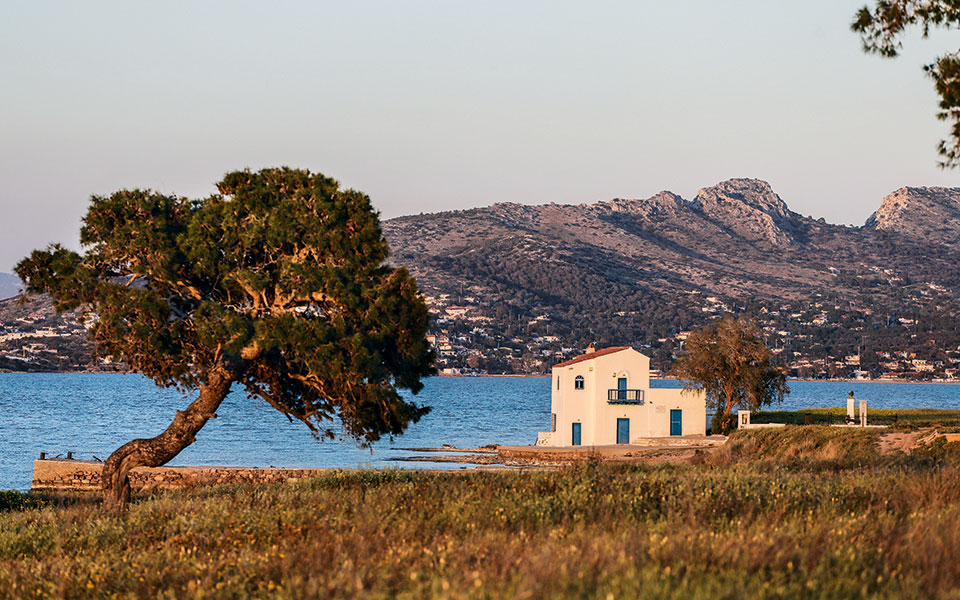The coastal forest of Faneromeni in Salamina is the quietest and most unpretentious place of natural beauty, half an hour away from Piraeus. Pines and clear blue water, but also soil and rocks and sandy beaches full of shells. A piece of green, virgin land drenched with salt. An intact pine forest, full of the scents of spring. In its heart, a historic monastery, the headquarters of the chieftains of 1821, the Monastery of Faneromeni and in front of it, on the edge of a wide blooming piece of land bounded by shallow waters, a historic small all-white two-story house, the house of Angelos and Anna Sikelianos.
Let’s start from the beginning though. Take the ferry boat from Perama to Paloukia and then, a short ride heading west will take you to the city of Salamina. Follow the coastal road passing by the taverns and the pine-shaded cafés of Koulouri, for a taste of cosmopolitan carelessness and then turn right and go straight to the Monastery of Faneromeni, which is located on the north coast of the northwestern peninsula of the island. As soon as the inner road heading north leads you to the bay of Vasilika and to Psili Ammos, follow the road to the west and you will find many openings by the road to park your car. From now on you will have to walk in order to discover the history of the virgin pine forest.
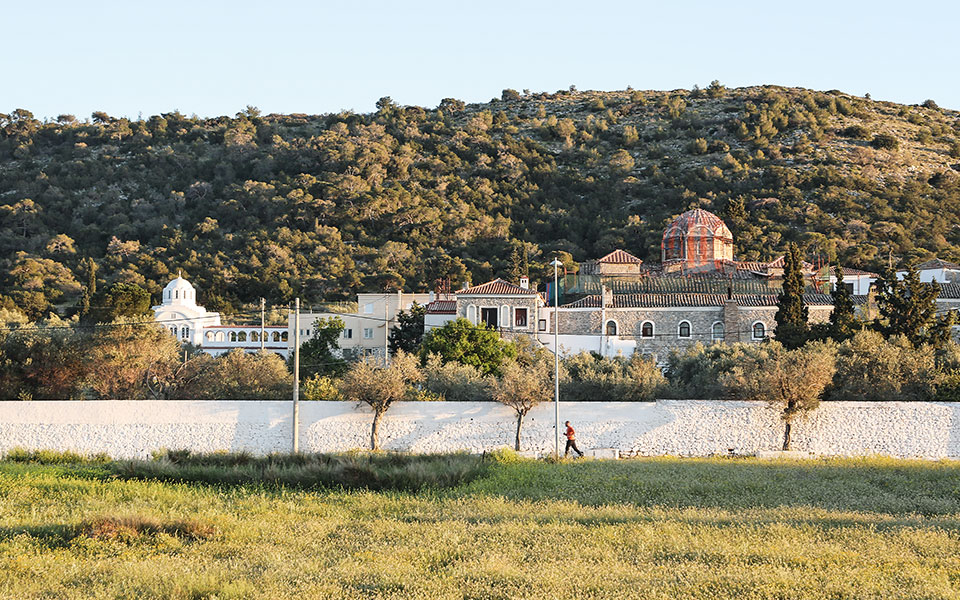
© Nikos Kokkalias
A network of natural trails and paths covers the forest, which was the pre-war and after-war paradise of the residents of Koulouri, where families used to walk, play, celebrate and camp and where, during the interwar period, Sikelianos used to read poems to Palamas and to other friends, in its shady, fragrant comfort. “Once upon a time there was life here, people, and anywhere there is people, there is care and protection”, says Mrs. Kalomira Papamichael-Digenaki, president of the LEPL Library – Museum of Folk Art and History of the Municipality of Salamina. Here and there, under the trees, there are stone remains of the children’s camps that, starting from the interwar period, experienced glory, under the aegis of YMCA, in the 60’s and then again in the 80’s; what remains today, lost in the wooded slope, are a few tent bases, some ruins of auxiliary spaces and the underpass that safely led the children to the sea.
The forest stretches over an almost uninterrupted chain of small and larger sandy coves. Sometimes the ground level is low enough to allow the direct access to the beaches and other times it requires the search for hidden descending passages. Sometimes the crystal clear waters wrinkle over the sandy bottom and other times they lick the brown-gray and blue-gray rock slabs. At the edge of the winter wave line, a thick band of shells and garbage, the leftovers of civilization, is formed. But the shells of mussels, smooth clams, venus clams, queen scallops, grooved carpet shells, sea urchins, grooved sea squirts and bearded horse mussels prevail, making plastic rather indistinguishable.
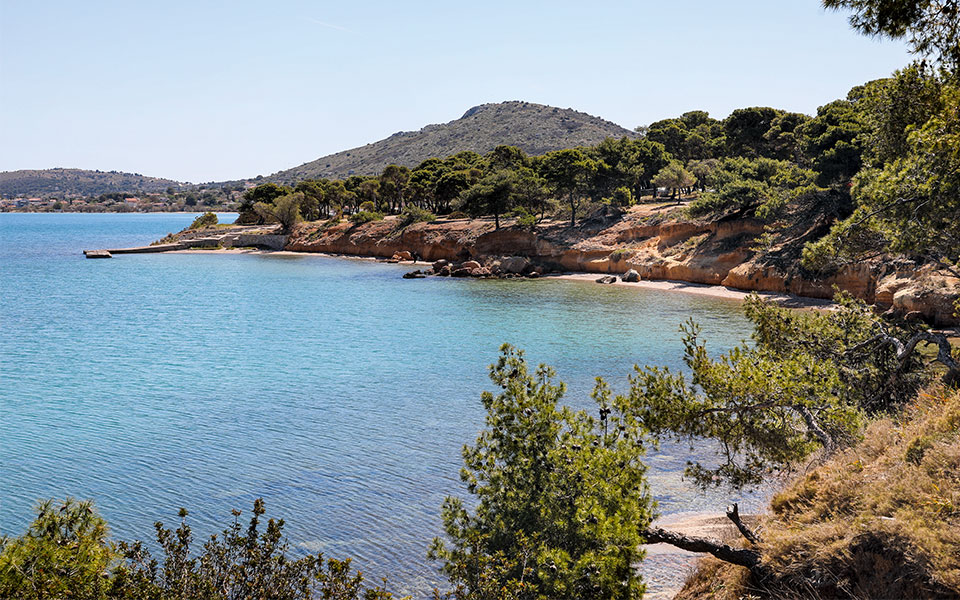
© Nikos Kokkalias
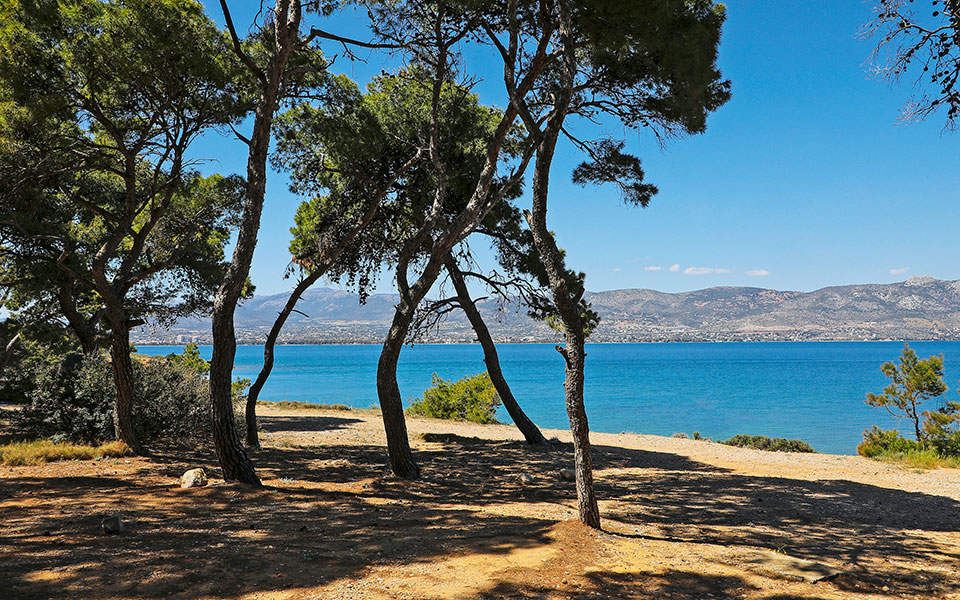
© Nikos Kokkalias
Back to the fragrant forest
The route leads, again and again, back to the forest with the mixed scents of resin, wildflowers and iodine. Children run among the trees, cyclists race on mountainous, wooded paths, groups of people walk quietly on the shaded paths, others play on the beaches with remote-controlled boats and a bunch of people has set up an outdoor table on the edge of a cliff, above the sea.
The atmosphere is transparent. At some point, the coastal forest is interrupted by a meadow, dotted with yellow daisies and blooming wild rockets and hoary mustards, which unfolds dazzlingly. At its edge, by the sea, the white house where Angelos Sikelianos lived from 1933 to 1950. A strong image, of the kind that we accept as redemption. It would follow us for hours.
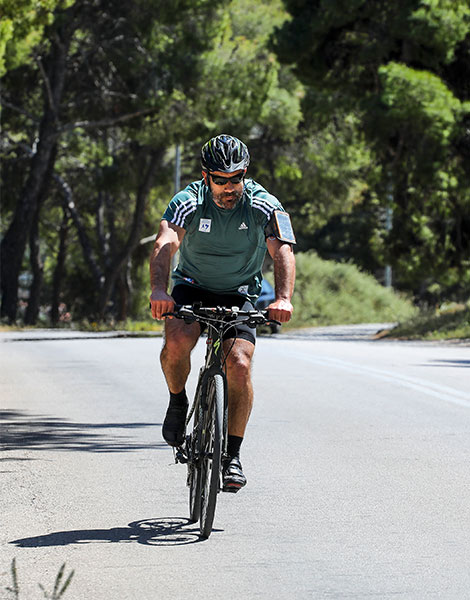
© Nikos Kokkalias
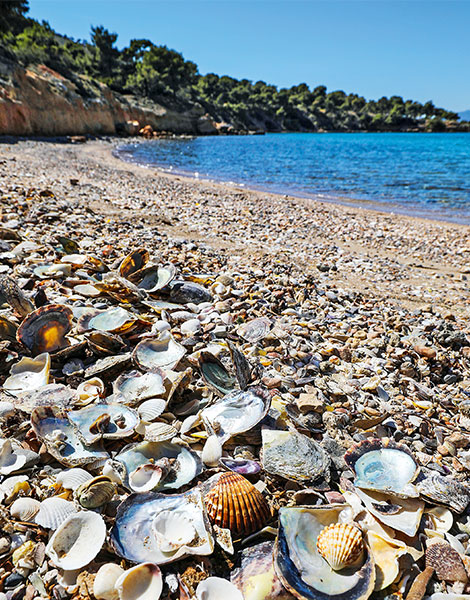
© Nikos Kokkalias
Behind us, above the road, the stone complex of the Monastery of Panaghia Faneromeni, and beyond that the continuation of the coastal pine forest stretching down to the pier, at the edge of the peninsula, where from the ferries depart for Nea Peramos and Megara. The whole forested area belongs to the monastery and thus has stayed intact.
The monastery was founded by the Megariot Lambros Kanellos in 1670, when he rebuilt an old church of the 13th century that had been built on the ruins of the ancient temple of Athena Skyrada. Lambros Kanellos retrieved from the ruins of the Christian church the old icon of the Virgin Mary, built the monastery, was renamed Lavrentios and became a monk, an eremite in a cell at an inaccessible place. He was later canonized by the Church. The monastery’s Katholikon, a three-aisled basilica with a high dome, houses paintings by Georgios Markou, dating back to 1735.
The church of Aghii Apostoli houses old documents, holy relics, holy utensils and heirlooms but also weapons that belonged to fighters of 1821, since during the Greek revolution the monastery was turned into their headquarters. Here is where Makrygiannis, Tzavellas, Kriezotis, Ypsilantis, Mavrovouniotis, Karaiskakis used to meet, where valuable relics were transported and kept, where civilians were sheltered and where wounded fighters were treated, in a hospital manned by prominent Athenian doctors. In the courtyard of the Katholikon there is the tomb of chieftain Gouras. In 1944 the male monastery turned into a female one.
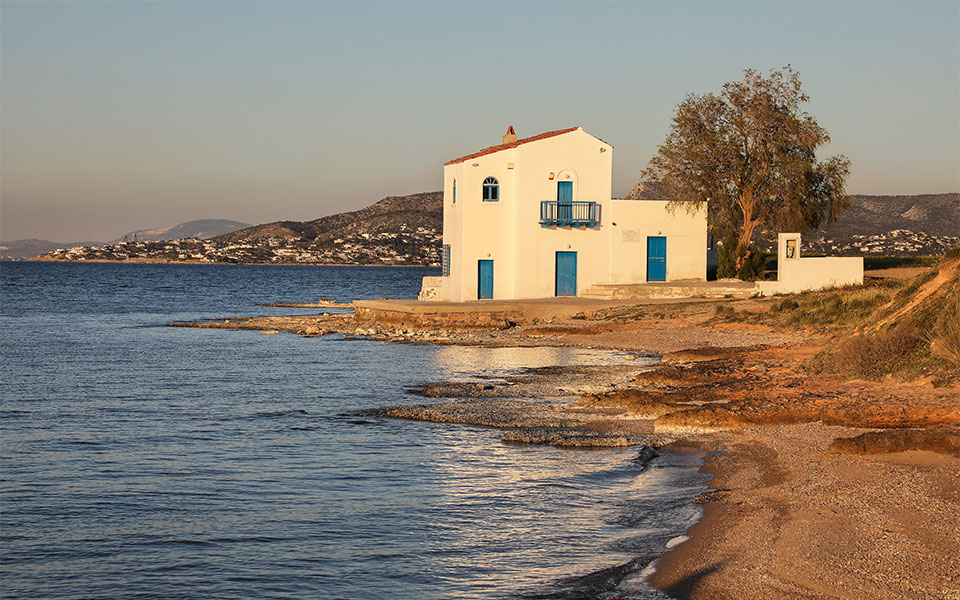
© Nikos Kokkalias
The house of the poet
Sikelianos first visited the island in 1930. In the place where the house-museum now stands, in the pre-revolutionary years there was one of the ten windmills of Salamina. The headquarters of the navy yard that has been transferred from Poros to the Bay of Faneromeni in 1878 was built on its ruins. In 1881, the navy yard was permanently relocated to Paloukia. The beautiful small two-story building fell to the monastery, which turned the ground floor into an arsanas (small shipyard) and the upper floor into a hermitage. The poet, who had already developed bonds with the people of Faneromeni and especially with monk Amvrosios, asked in 1933 for a place to stay. He was granted the arsanas-hermitage.
From 1938, he started sharing it with his second wife, Anna. He spent there, with her, most of his difficult times until the end of his life. “He loved Salamina and Salamina loved him back. He made strong friendships with people of spirit as well as with ordinary inhabitants of the island, he even became best man and godfather thus creating family bonds with some of his friends. “People in Salamina consider him one of them”, says Mrs. Papamichael-Digenaki. It was Anna who had the idea for the restoration of the house, which was completed in 2006 by the Municipality of Salamina and the Ephorate of Contemporary and Modern Monuments of Attica. A small museum was created there, housing objects, furniture, heirlooms, photographs and letters, donated by Anna Sikelianou and by friends of the couple. The museum can be visited only after consultation with the Library – Folklore Maritime Museum (Tel. (+30) 213.202.7316).
The air passes through the foliage of the yard tree. Gradually the light loses its light color, it becomes a crimson, dense matter. Everything changes. The landscape is transformed from one hour to the next, from one day to the next, from one person to the next. Because, as Venezis used to say, the landscape is the person who sees it.

